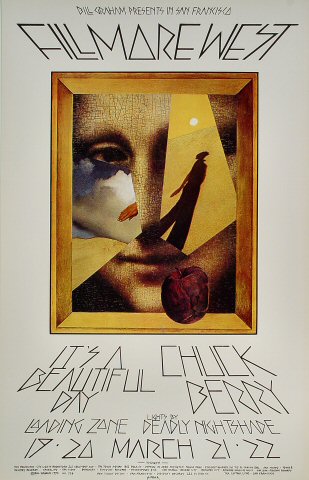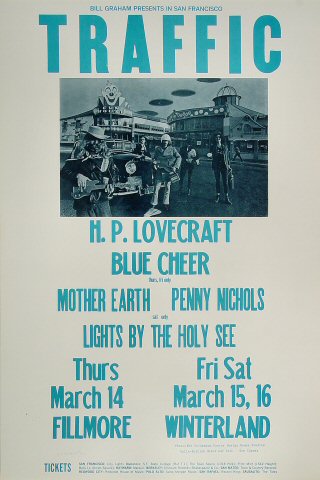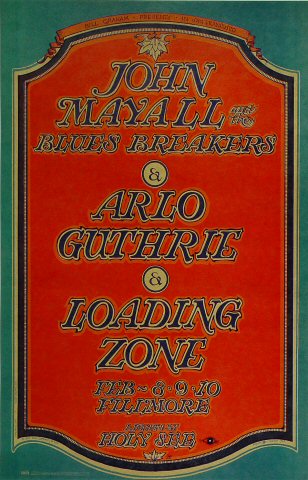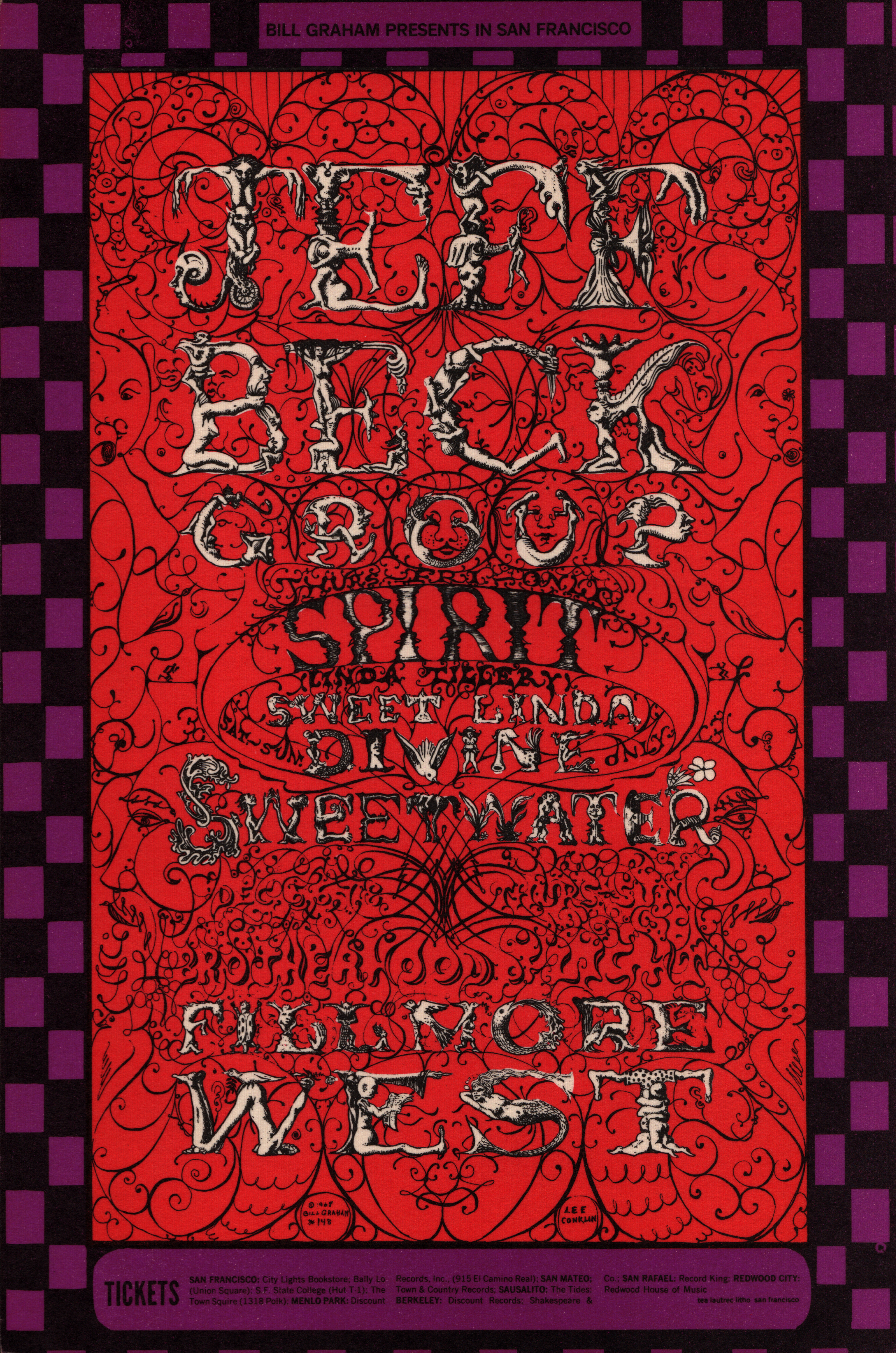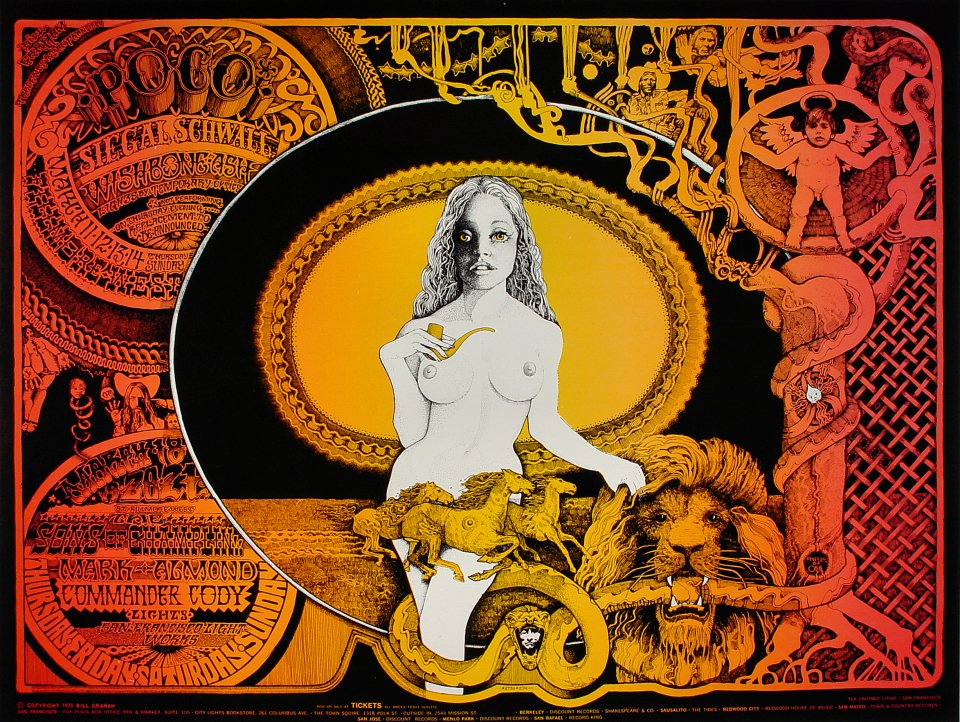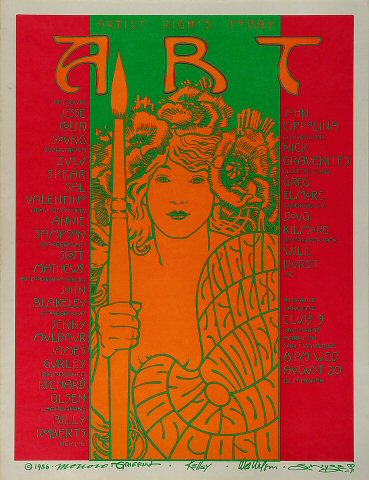Wednesday, December 16, 2009
Mike Bloomfield
"He didn't get a chance to expand the mission of his soul, but those few albums he played on – those are enough," says Carlos Santana, referring to Mike Bloomfield's death in 1981, of a drug overdose at age 37, and the key recordings Bloomfield left behind. Bloomfield helped Bob Dylan go electric with his work on Highway 61 Revisited (those are Bloomfield's skyward spirals on "Like a Rolling Stone") and two albums with the Paul Butterfield Blues Band, including 1966's raga-blues monster, East-West. (Check out Bloomfield's winding, epic solo on the title track.) A native of Chicago, Bloomfield studied the local electric-blues legends like Muddy Waters and Howlin' Wolf up close while he was growing up, and he packed those lessons into a piercing clean-treble tone and solos that took off with fluid, modal-jazz ecstasy. "Michael always sounded like a salmon going against the current," Santana says. "He comes from B.B. King. But he went somewhere else."
Butterfield Blues Band
Paul Butterfield was born and raised in Chicago's Hyde Park neighborhood. After studying classical flute as a teenager, he developed a love for the blues harmonica, and hooked up with white, blues-loving, U of Chicago physics student Elvin Bishop. The pair started hanging around black blues musicians such as Muddy Waters, Howlin' Wolf, and Junior Wells. Butterfield and Bishop soon formed a band with Jerome Arnold and Sam Lay (both of Howlin' Wolf's band). In 1963, a watershed event in introducing blues to a white audience in Chicago occurred when this racially mixed ensemble was made the house band at Big John's, a folk music club in the Old Town district on Chicago's north side. Butterfield was still underage (as was guitarist Mike Bloomfield, who was already working there in his own band).
Classic Savoy Brown
Today I present Savoy Brown. Savoy Brown was founded by Kim Simmonds; with Guitarist "Lonesome" Dave Peverett, bassist Tony Stevens, and drummer Roger Earl. After leaving Simmonds in December 1970, the 3 added Rod Price on slide guitar and formed Foghat.
Chicken Shack was a band founded in the late 1960s by Andy Silvester (bass guitar) and Stan Webb (guitar and vocals), with Alan Morley (drums) and later joined by Christine Perfect (vocals and keyboards). Perfect left the band in 1969 when she married John McVie of Fleetwood Mac. Pianist Paul Raymond, bassist Andy Silvester, and drummer Dave Bidwell all left in 1971 to join Simmonds and his Savoy Brown. Confused?
BONUS MUSIC:
Lost and Lonely Child and The Boogie Part 1 & Part 2
Chicken Shack was a band founded in the late 1960s by Andy Silvester (bass guitar) and Stan Webb (guitar and vocals), with Alan Morley (drums) and later joined by Christine Perfect (vocals and keyboards). Perfect left the band in 1969 when she married John McVie of Fleetwood Mac. Pianist Paul Raymond, bassist Andy Silvester, and drummer Dave Bidwell all left in 1971 to join Simmonds and his Savoy Brown. Confused?
BONUS MUSIC:
- I'd rather go blind - Chicken Shack
- Long Way To Go - Foghat
- Slow Ride - Foghat
- Ride, Ride, Ride - Foghat
- Feel So Bad - Foghat
Lost and Lonely Child and The Boogie Part 1 & Part 2
Fleetwood Mac's Founder: Peter Green
In late 1966, Peter Green had the job of replacing Eric Clapton in John Mayall's Bluesbreakers. Mayall told his producer, "He might not be better [than Clapton] now. But you wait... he's going to be the best." Soon, with the original Fleetwood Mac, he was Britain's most progressive blues guitarist, with a Chicago-informed aggression heightened by the melodic adventure on albums like 1969's Then Play On. Green soon entered a dark age of mental and health problems, returning in the Nineties with more subdued but recognizable gifts.
The Incredible Peter Green Story: Man of the World
PETER GREEN BONUS: SUPERNATURAL & MY DREAM
- The demo HERE
- The film trailer HERE
- Jam Session HERE
- Original Man of the World HERE (with words) and HERE
PETER GREEN BONUS: SUPERNATURAL & MY DREAM
Classic Fleetwood Mac
Band's history: story: Part 1, Part 2, Part 3, Part 4, Part 5
Listen to Dust HERE
Sentimental Lady HERE
Dragon Fly HERE
Sands of Time HERE
Bare Trees album HERE
Mystery To Me album HERE
Future Games album HERE
BONUS MAC: Spare Me a Little, Say You Love Me, Morning Rain, Over My Head, Homeward Bound, Future Games , Woman of 1000 Years & Sometimes
Listen to Dust HERE
Sentimental Lady HERE
Dragon Fly HERE
Sands of Time HERE
Bare Trees album HERE
Mystery To Me album HERE
Future Games album HERE
BONUS MAC: Spare Me a Little, Say You Love Me, Morning Rain, Over My Head, Homeward Bound, Future Games , Woman of 1000 Years & Sometimes
THE BEST BAND EVER: The Allman Brothers Band
 Live at the Fillmore East 1971
Live at the Fillmore East 1971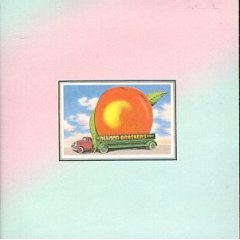
HOF INDUCTEES
"The group's marathon concerts, best captured on the classic The Allman Brothers Band At Fillmore East (1971), are the stuff of rock legend." I saw them 7 times, twice with the original lineup.
Eat A Peach 1972
The Allman Brothers 40th Anniversary Tour Ends
click to enlarge
In 1970 and 1971, 38+ years ago, I had the good fortune of seeing two concerts that shaped my love of rock music: Derek and the Dominos (Eric Clapton) in London and the Allman Brothers Band in Boston. I later learned that the late great Duane Allman held a link (Jam 4) & (Jam 5) between the two. The Allman Brothers remain the best band ever in my mind. Click photos below for full view:


Last night I was treated to a wonderful night of dancing and music with Widespread Panic and The Allman Brothers Band at the Cynthia Woods Mitchell Pavillion outside of Houston.
 "Dreams" (live from 2003)
"Dreams" (live from 2003) "In Memory of Elizabeth Reed" (live from 1970)
"In Memory of Elizabeth Reed" (live from 1970)"Whipping Post" (live from 1970)
Additional Classics:
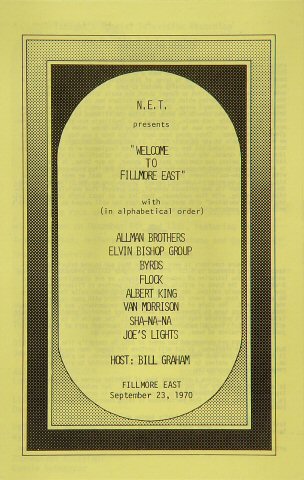
- Going Down Slow
- Loan Me A Dime
- Dimples & Every Hungry Woman Live
- Black Hearted Woman
- Not My Cross to Bear
- Midnight Rider
- Les Brers in A Minor
- Statesboro Blues 3/12/71
- Blue Sky Live
- Blue Sky Live
- Done Somebody Wrong
- Hoochie Coochie Man
- Stormy Monday
- Trouble No More
- Hot 'Lanta
- One Way Out
- In Memory of Elizabeth Reed
- Stonybrook 9/19/71
- Soul Serenade 8/26/71
- The Final Fillmore East Concert 6/27/71
- Whipping Post Fillmore East: HERE
- Mountain Jam: HERE (27 minutes)
- You Don't Love Me
- Ain't Wastin' Time No More
- Melissa
- Little Martha
- Wipe the Windows, Check the Oil, Dollar Gas
- Peakin' At the Beacon
- High Falls

Thursday, November 26, 2009
Albert King
When Rolling Stone reporter Jon Landau asked Albert King in 1968 who his guitar influences were, King replied, "Nobody. Everything I do is wrong." A pioneer of electric blues, King (who was left-handed) played a right-handed 1959 Gibson Flying V upside down, with the bass strings unconventionally facing the floor. He used an indecipherable secret tuning, hitting notes with his thumb. The six-foot-four, 300-pound King was able to bend notes farther and more powerfully than almost any other guitarist, and his records influenced a generation: Eric Clapton lifted the "Strange Brew" solo from King, and Duane Allman turned the melody of King's "As the Years Go Passing By" into the main riff of "Layla." Jimi Hendrix was star-struck when his hero opened for him at the Fillmore in 1967. "I taught [Hendrix] a lesson about the blues," said King. "I could have easily played his songs, but he couldn't play mine."
Freddie King
In a 1985 interview, Eric Clapton cited Freddy King's 1961 B side "I Love the Woman" as "the first time I heard that electric lead-guitar style, with the bent notes... [it] started me on my path." Clapton shared his love of King with fellow British guitar heroes Peter Green, Jeff Beck and Mick Taylor, all of whom were profoundly influenced by King's sharpened-treble tone and curt melodic hooks on iconic singles such as "The Stumble," "I'm Tore Down" and "Someday, After Awhile." Nicknamed "The Texas Cannonball" for his imposing build and incendiary live shows, King had a unique guitar attack. "Steel on steel is an unforgettable sound," says Derek Trucks, referring to King's use of metal banjo picks. "But it's gotta be in the right hands. The way he used it – man, you were going to hear that guitar." Trucks can still hear King's huge impact on Clapton. "When I played with Eric," Trucks said recently, "there were times when he would take solos and I would get that Freddy vibe."
Friday, November 6, 2009
Monday, November 2, 2009
Friday, July 24, 2009
Subscribe to:
Posts (Atom)
